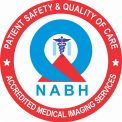Bone Mineral Density (DEXA SCAN)
A DXA test measures your bone mineral density at your hip and spine which shows your doctor if you have osteoporosis or a less severe, but still problematic level of bone loss, called osteopenia.
A bone density test should be considered:
- If you’re postmenopausal and at risk of osteoporosis
- To assess your response to osteoporosis medications
- If you have a condition called “primary hyperparathyroidism”
- If you have certain spinal abnormalities that might indicate a fracture
- If you’re on long-term corticosteroid therapy
Osteoporosis is a thinning of the bones which causes the bones to become fragile and more likely to break. However, osteoporosis is preventable and, if diagnosed early, there are treatments available to slow the progression of bone loss.
Risk factors for osteoporosis:
- Female
- Age 65 or older
- Family history of osteoporosis
- Estrogen deficiency (which can be caused by menopause)
- Little or no exercise
- Past or current tobacco and/or excessive alcohol use
- Use of certain medications such as corticosteroids
- Low body weight or a small frame
- History of broken bones
Your bone density test results are reported using T-scores. A T-score shows how much your bone density is higher or lower than the bone density of a healthy 30-year old adult.
- A T-score of -1.0 or above is normal bone density. Examples are 0.9, 0 and -0.9.
- A T-score between -1.0 and -2.5 means you have low bone density or osteopenia. Examples are T-scores of -1.1, -1.6 and -2.4.
- A T-score of -2.5 or below is a diagnosis of osteoporosis. Examples are T-scores of -2.6, -3.3 and -3.9.
The lower a person’s T-score, the lower the bone density. A T-score of -1.0 is lower than a T-score of 0.5 and a T-score of -3.5 is lower than a T-score of -3.0.



